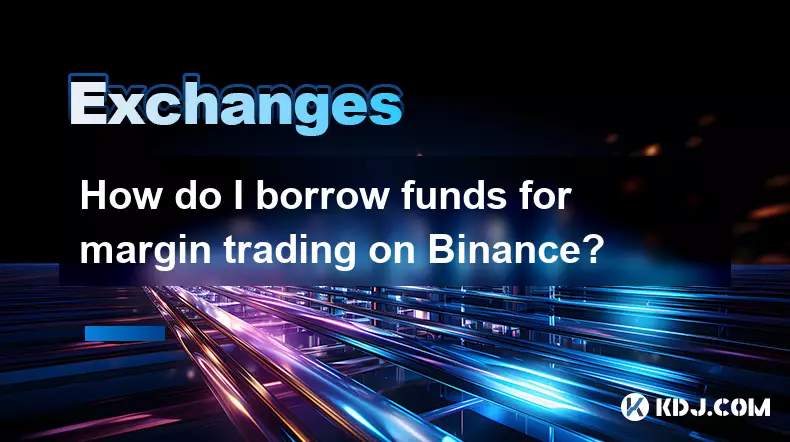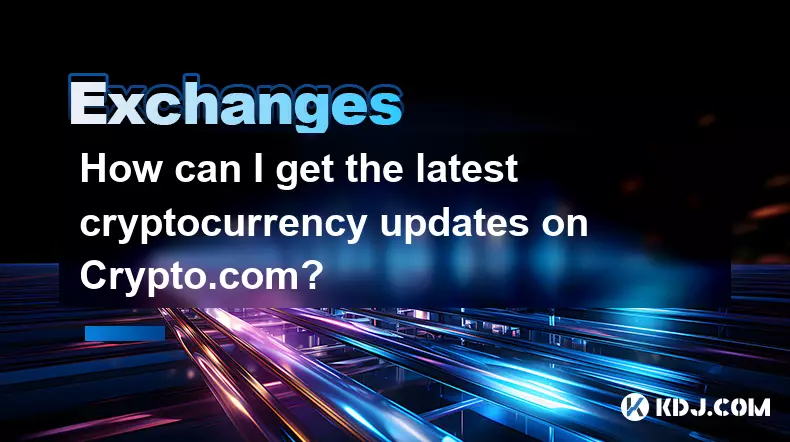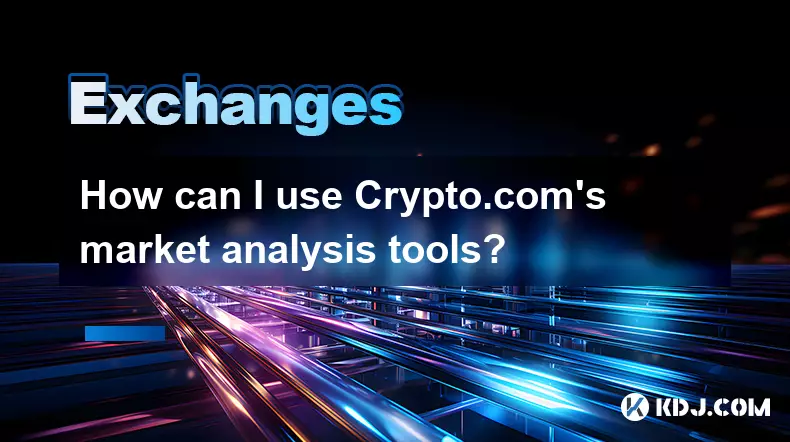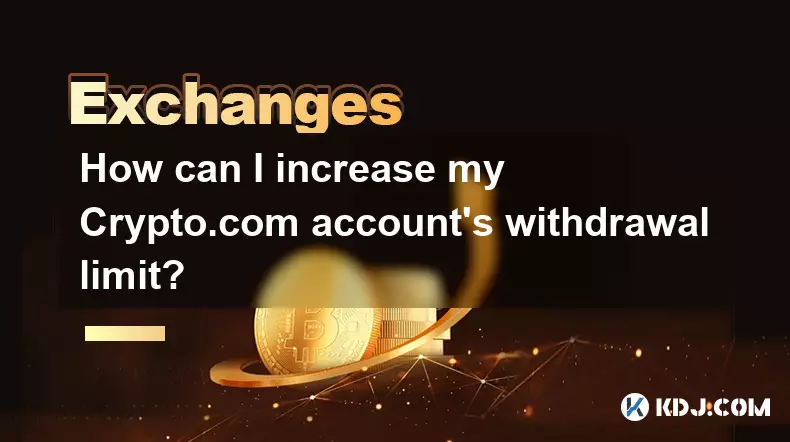-
 bitcoin
bitcoin $109667.069529 USD
-3.03% -
 ethereum
ethereum $3936.685804 USD
-4.07% -
 tether
tether $1.000493 USD
0.01% -
 xrp
xrp $2.771823 USD
-4.74% -
 bnb
bnb $957.805027 USD
-5.34% -
 solana
solana $196.735100 USD
-6.68% -
 usd-coin
usd-coin $0.999727 USD
-0.01% -
 dogecoin
dogecoin $0.227355 USD
-5.12% -
 tron
tron $0.335205 USD
-0.81% -
 cardano
cardano $0.779256 USD
-3.59% -
 ethena-usde
ethena-usde $0.999900 USD
-0.06% -
 hyperliquid
hyperliquid $42.492095 USD
-6.61% -
 chainlink
chainlink $20.501853 USD
-4.34% -
 avalanche
avalanche $28.952606 USD
-11.21% -
 stellar
stellar $0.356038 USD
-3.93%
How do I borrow funds for margin trading on Binance?
Binance margin trading lets users borrow funds to amplify positions, but requires careful risk management due to liquidation risks and hourly interest accrual.
Sep 22, 2025 at 09:19 pm

Understanding Margin Trading on Binance
1. Binance offers a feature known as margin trading, which allows users to borrow funds to increase their trading position beyond what their own capital would permit. This process amplifies both potential profits and risks. To begin, traders must access the margin section of the Binance platform, where they can choose between cross-margin and isolated-margin modes based on their risk tolerance and strategy.
2. Before borrowing, users are required to transfer assets into their margin wallet. This serves as collateral for the loan. Supported assets typically include major cryptocurrencies such as BTC, ETH, and stablecoins like USDT or BUSD. The value of the collateral directly affects how much one can borrow, governed by the loan-to-value ratio set by Binance.
3. Each asset has a specific borrowing limit and interest rate, which fluctuates depending on supply and demand within the platform’s peer-to-peer lending pool or Binance’s internal funding mechanism. Interest accrues hourly, and failure to repay on time may lead to liquidation of the collateral if the maintenance margin level is breached.
4. Users must maintain constant vigilance over their positions due to market volatility. A sudden price swing can trigger a margin call, requiring additional funds or resulting in automatic sell-offs to cover debt. Risk management tools such as stop-limit orders should be used proactively to protect against adverse movements.
5. New users are advised to start with small amounts and use the testnet version of Binance Margin to simulate trades without real financial exposure. Familiarity with the interface, fee structure, and liquidation mechanics is crucial before engaging in live margin trading.
Steps to Borrow Funds on Binance
1. Log in to your Binance account and navigate to the [Margin] tab located in the top menu. Select either 'Cross' or 'Isolated' depending on whether you want to share collateral across multiple positions or isolate risk per trade.
2. Transfer funds from your spot wallet to the margin wallet by clicking “Transfer” and specifying the amount and asset type. This step activates your ability to borrow since Binance uses transferred assets as security.
3. Once the transfer is complete, click on “Borrow” within the margin dashboard. Choose the cryptocurrency you wish to borrow—common options include USDT, BTC, or ETH—and enter the desired amount. The system will display available limits based on your current collateral.
4. Review the annual percentage rate (APR) associated with the loan and confirm the transaction. After confirmation, the borrowed funds will appear in your margin wallet and can be used immediately for trading on supported pairs.
5. Execute trades using the borrowed capital through the exchange interface. Remember that both gains and losses are calculated on the full position size, not just your initial equity. Monitor open orders and price action closely to avoid unexpected liquidations.
Managing Repayment and Risks
1. Repayment of borrowed funds plus accrued interest must be completed before closing a position or withdrawing collateral. Navigate to the “Repay” section under the margin interface, select the loaned asset, and confirm the amount to settle.
2. Interest charges continue accumulating until the full balance is repaid, so delaying repayment increases overall cost significantly. Partial repayments reduce outstanding principal but do not eliminate ongoing interest on the remaining sum.
3. Liquidation occurs when the equity in the margin account falls below the required threshold, often due to unfavorable price movement. In such cases, Binance automatically sells part or all of the holdings to repay lenders, potentially leading to total loss of deposited collateral.
4. Diversifying borrowed assets and avoiding maximum leverage reduces vulnerability to rapid market shifts. Conservative strategies tend to outperform aggressive ones over time, especially during periods of high volatility common in crypto markets.
5. Regularly check your health ratio, a metric displayed on the margin dashboard indicating how close your position is to liquidation. A lower health ratio means higher risk; values below 1.0 usually signal imminent forced closure of positions.
Frequently Asked Questions
What happens if I don’t repay my margin loan on time?Failure to repay results in continuous interest accumulation. If the health ratio drops too low, Binance initiates automatic liquidation to recover the owed amount. You remain liable for any shortfall if the collateral doesn’t fully cover the debt.
Can I borrow multiple assets simultaneously in isolated margin mode?Yes, each isolated margin account supports one trading pair at a time, allowing separate borrowing for different pairs. For example, you can borrow USDT against BTC in one isolated account and ETH against BNB in another, managing them independently.
Are there fees for transferring funds to the margin wallet?No, Binance does not charge fees for transferring assets between spot and margin wallets. However, network fees may apply when depositing cryptocurrencies from external wallets, depending on blockchain congestion and token type.
How is the borrowing interest calculated?Interest is computed hourly based on the outstanding loan balance and the prevailing APR. It is charged every hour on the hour, and rates may vary according to real-time supply and demand dynamics within Binance's lending system.
Disclaimer:info@kdj.com
The information provided is not trading advice. kdj.com does not assume any responsibility for any investments made based on the information provided in this article. Cryptocurrencies are highly volatile and it is highly recommended that you invest with caution after thorough research!
If you believe that the content used on this website infringes your copyright, please contact us immediately (info@kdj.com) and we will delete it promptly.
- AlphaTON's Bold Bet: Toncoin, Balance Sheets, and the Future of Digital Treasuries
- 2025-09-27 04:45:15
- Crypto Kidnapping in Minnesota: A New York Minute Breakdown of the $8 Million Heist
- 2025-09-27 04:25:14
- Avalanche, RUVI, and the Altcoin Rush: What's Fueling the Fire?
- 2025-09-27 04:25:14
- Optimism's Breakdown: Navigating Support Zones for the Next Move
- 2025-09-27 04:45:15
- Linea Price Surges as SWIFT Pilots Blockchain Messaging: A New Era for Global Payments?
- 2025-09-27 04:50:01
- Dogecoin Price Prediction & Crypto Buy: Navigating the Meme Coin Maze
- 2025-09-27 04:50:01
Related knowledge

How can I get the latest cryptocurrency updates on Crypto.com?
Sep 26,2025 at 07:54am
Accessing Real-Time Crypto Market Data on Crypto.com1. Navigate to the Crypto.com website or open the mobile application to access live price charts a...

How can I use Crypto.com's market analysis tools?
Sep 23,2025 at 01:54am
Understanding Crypto.com’s Market Analysis Dashboard1. Accessing the market analysis tools begins with logging into your Crypto.com account through th...

How can I unlink my Crypto.com payment method?
Sep 23,2025 at 12:54am
Understanding Payment Methods on Crypto.com1. Crypto.com allows users to link various payment methods including credit cards, debit cards, and bank ac...

How can I increase my Crypto.com account's withdrawal limit?
Sep 23,2025 at 10:37am
Understanding Withdrawal Limits on Crypto.com1. Crypto.com enforces withdrawal limits to enhance account security and comply with regulatory standards...

How can I check Crypto.com's cryptocurrency exchange rates?
Sep 26,2025 at 01:54am
Accessing Real-Time Crypto.com Exchange Rates1. Navigate to the official Crypto.com website or open the mobile application. Both platforms display liv...

How can I participate in liquidity mining on Crypto.com?
Sep 23,2025 at 09:36am
Understanding Liquidity Mining on Crypto.com1. Liquidity mining allows users to earn rewards by providing assets to decentralized finance (DeFi) pools...

How can I get the latest cryptocurrency updates on Crypto.com?
Sep 26,2025 at 07:54am
Accessing Real-Time Crypto Market Data on Crypto.com1. Navigate to the Crypto.com website or open the mobile application to access live price charts a...

How can I use Crypto.com's market analysis tools?
Sep 23,2025 at 01:54am
Understanding Crypto.com’s Market Analysis Dashboard1. Accessing the market analysis tools begins with logging into your Crypto.com account through th...

How can I unlink my Crypto.com payment method?
Sep 23,2025 at 12:54am
Understanding Payment Methods on Crypto.com1. Crypto.com allows users to link various payment methods including credit cards, debit cards, and bank ac...

How can I increase my Crypto.com account's withdrawal limit?
Sep 23,2025 at 10:37am
Understanding Withdrawal Limits on Crypto.com1. Crypto.com enforces withdrawal limits to enhance account security and comply with regulatory standards...

How can I check Crypto.com's cryptocurrency exchange rates?
Sep 26,2025 at 01:54am
Accessing Real-Time Crypto.com Exchange Rates1. Navigate to the official Crypto.com website or open the mobile application. Both platforms display liv...

How can I participate in liquidity mining on Crypto.com?
Sep 23,2025 at 09:36am
Understanding Liquidity Mining on Crypto.com1. Liquidity mining allows users to earn rewards by providing assets to decentralized finance (DeFi) pools...
See all articles










































































